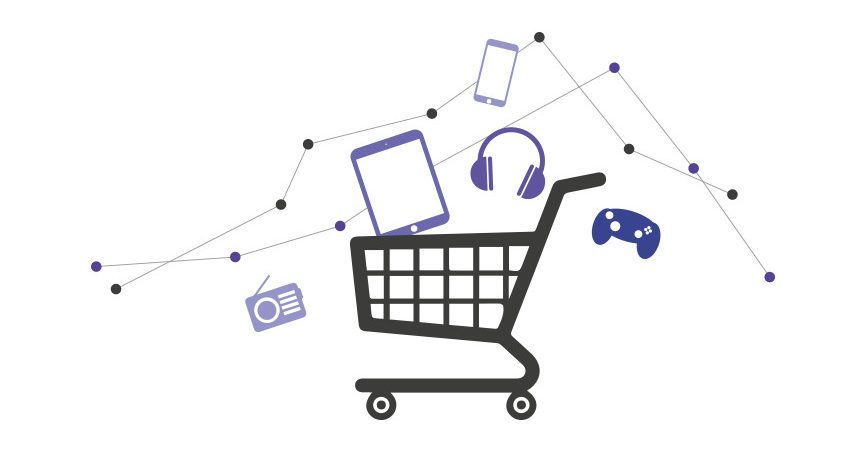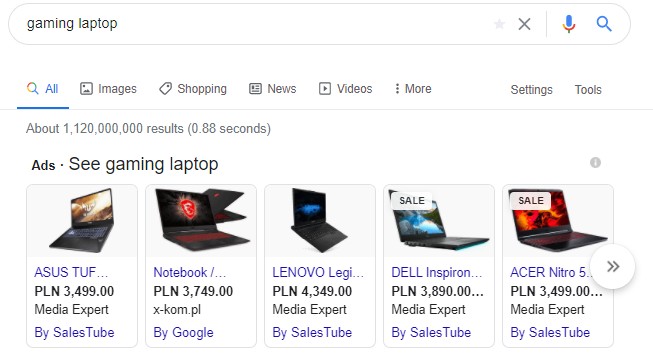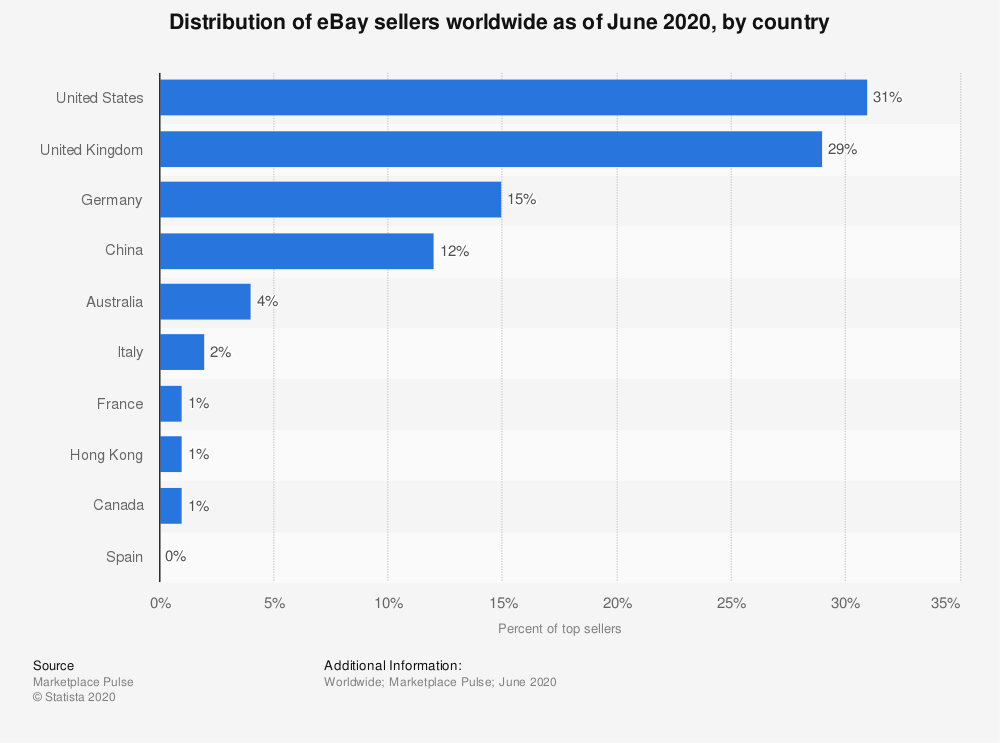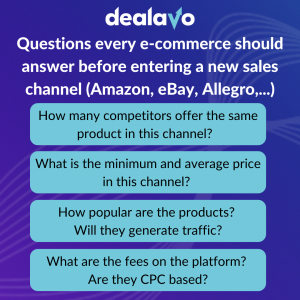
Multichannel selling: Which products to sell and promote on the most important e-commerce platforms?
- 07 April 2021

Currently, most online shops sell and promote their products not only on their own websites but also in many other channels. Frequent platforms include Amazon, eBay, Google Shopping, Idealo or Allegro.
The sellers often ask themselves questions such as: In which channels should I offer and promote my products? Which product categories should I focus on? Is it worth it to compete with price in a specific channel?
In the following article, we listed some tips on how online shops should optimise their sales in each of the indicated channels.
Article outline:
-
The most popular channels for promotion and selling
-
Allegro
-
Amazon
-
Google Shopping
-
Idealo
- eBay
-
-
What factors should you take into account when choosing promotion and sales channels?
-
Competition
-
Minimum and average price of the product
-
Popularity of the product
-
Fees and commissions
-
-
How to prepare your shop for multichannel selling?
The most popular channels for promotion and selling
When considering promotional channels and traffic generators for their website, online shops usually want to sell and/or promote their products on marketplaces and price comparison platforms. That is because marketplaces and price comparison platforms are usually the first place visited by customers who want to make a purchase.
This is also where customers get to know the offering of new online shops. Even if they already have their own trusted distributors, they still visit such platforms to make sure that there is no shop with a better price offer. As shown by market research, 70% to 90% of customers (depending on the market sector) use price comparison platforms before making a purchase. Many of them also regard marketplaces as a form of price comparison platforms. This is why online shops are so eager to be present on such websites.
ALLEGRO
Allegro is a marketplace listed as one of the 10 biggest e-commerce websites in the world (even though it operates only in Europe). According to Gemius, it is the most recognisable e-commerce platform in Poland (the country of its origin) – more than 86% of people name it when asked to list the most popular e-commerce websites. The success of Allegro can be measured by its record listing on the stock exchange in October 2020 with the biggest Initial Public Offering in the history of Poland. Allegro became the largest company in the country, as discussed in our article: How will the new API of Allegro affect the availability of analytical data?
What does it mean for the sellers? Sellers who offer their products on Allegro have access to an enormous number of customers who trust this platform and use it for shopping. The downside is that sellers have to pay commissions, which decrease their profit and can be as high as 15% (more information in the article: Allegro vs Amazon – major similarities and differences); also, the conditions for selling on the platform can frequently be very strict which is frequently commented by the sellers.
AMAZON
Similarly to Allegro, presence in this channel offers greater visibility to potential customers; the drawback, however, is that you have to pay fairly high fees (commissions on sales and a fixed fee if you maintain a professional account. Read more about Amazon fees).
Other distinguishing factors of Amazon include the Buy Box, which highlights a single offer. Usually, this offer is subsequently selected by the consumers – the studies show that approx. 82% of sales on Amazon are made using the Buy Box. Most sellers are aware of this, and they make every effort to ensure that their offer is listed in that place.
GOOGLE SHOPPING
Google Shopping is a price comparison platform that enables the sellers to present their offering directly in the web browser (and in the dedicated Google Shopping tab). This way, the customer can find out about the proposed products without having to enter any website. It looks like this:

This channel is becoming an increasingly popular way for shops to attract customers to their website. Promotion in this channel usually requires having an account at the Google Merchant Center and paying the fees discussed in the following article: Your offer in Google Shopping – Costs and conditions in a nutshell
IDEALO
Idealo is a price comparison website established in Germany in 2000. It is also popular in other western European countries, such as the United Kingdom, Italy, France, or Spain. Like other price comparison websites, it allows sorting products according to different criteria: price, popularity, reviews, or the seller’s ranking. This makes it easier for consumers to view products and choose the best offers from a variety of different shops and different prices.
Idealo collects payments from shops for every click on their offering (CPC). The amount of the fee depends on the country where the shop wants to advertise its product range – in the UK, for instance, the cost is £0.24. The fees may also vary depending on the product category. You can learn more about the details from the price list posted on the Idealo website.
EBAY
eBay is one of the most popular marketplaces in Europe – millions of people trade there every day. Its origins date back to 1995 when Pierre Omidyar launched Auction Web website. Below, you can see from which countries the sellers usually come from:

One of the most characteristic features of eBay are its auctions – customers can bid how much they would pay for a product.
As in the case of other sales channels, sellers need to pay fees for using it. Basic fee for most categories is 10.2% of product value (with a maximum fee of $750 per item). You can find the details about eBay’s fees on their website: link
What factors should you take into account while choosing promotion and sales channels?
Shops that offer hundreds or thousands of products have to face a difficult decisions:
- What channels to choose to promote the products?
- Should you focus on one channel or several?
- Should you promote all products or only some of them?
To answer these questions, you might want to analyse several variables for each of the channels:
Competition
The first step should be to check if other shops promote a particular product in the selected channel and compare the level of competition in each channel. After all, there may be situations where there are many offers for the same product on eBay, while the number of online shops promoting the same offer on Amazon is much smaller. To find out how significant the differences can be between different platforms, you can read a report that analyses the competition on 2 platforms: Competition on Google Shopping vs Ceneo: Dealavo Report.
Naturally, it is difficult to prepare such a comparison manually because:
-
If the product range is extensive – this requires tremendous effort. If the shop offers 5 thousand products, and checking the competition for 1 offer takes 10 seconds per channel, completing such an analysis manually for Idealo, Allegro, Google Shopping and Amazon would take 56 hours!
-
The data can also quickly become outdated. As early as one day after the preparation of the analysis, 5 new shops may start to offer the product in the particular channel.
This task is much easier if your shop uses a platform for competitor price monitoring. Such platforms always have access to the current data to easily check the number of retailers offering a product in the selected channel and, this way, compare the level of competition on the individual platforms.
Minimum and average price of the product
After you find out which competitors offer a selected product in a specific channel, you should check the prices they offer.
You might want to think twice before choosing a channel where a product is offered at particularly attractive prices (e.g. prices similar to the price for which the retailer purchased the product), particularly if, in order to maintain a suitable margin, you would have to set a price much higher than the average price in the particular channel.
Exceptions to this rule may be made if the sellers who offer the product for a low price are unknown shops without reviews, and your shop is well-recognised and trusted. Otherwise, there is a risk that even if someone clicks on an offer of your shop, e.g., on Idealo, they will not decide to make the purchase. Due to the CPC payment system, your shop will then have to pay the costs of promoting your offer even though no purchase was made.
To avoid this, you might want to monitor the competitive position of your shop and withdraw from paid channels that do not convert into sales. Shops that do not conduct regular price monitoring and analysis of their competitive position can check if their offering is competitive by downloading a free shop analysis in the form of a customised report.
Also, if you find out that many shops on the market offer a product at prices that would not be profitable to your e-commerce business, you will have a convincing argument during negotiations of commercial terms with the manufacturer because this could mean that the terms they offer to you are worse than the terms offered to other clients.
Popularity of the product
A frequently promoted approach in e-commerce is to use price comparison platforms and marketplaces to promote so-called traffic generators. This refers to popular products (frequently best-sellers) to attract consumers to the website of your online store, in the hope that they will then add some extra items to their cart.
How to identify such products? These will be the best-selling products in a particular category – usually the ones the customers ask about and purchase most often. Frequently, they will not be particularly expensive, in the $10–50 range, with high „household penetration”, i.e. percentage of households buying the product. You might also want to check what is currently regarded as a best-seller on the particular platform – for instance, Amazon presents the list of best-sellers at https://www.amazon.com/Best-Sellers/zgbs.
Shops often accept lower margins on such products in the hope that, thanks to competitive prices, they will be able to attract many customers to their website / account, where they can then propose “standard” products, with higher margins.
However, this strategy is more effective if the customer can be redirected to the website of the particular e-commerce business, i.e. it will work better with Idealo and Google Shopping rather than with Allegro or Amazon.
Fees and commissions
Another important step is to compare the cost of promoting your offer in each channel. Frequently, the amount of the commission will depend on the category of the product offered by your shop. For specific information, read our articles:
-
About Google Shopping: Your offer in Google Shopping
-
About Allegro and Amazon: Allegro vs Amazon
Summary – how to prepare for multichannel selling?

To maximise the profits of your online shop, you might want to optimise your sales and promotion in the most popular selling channels – Allegro, Amazon, Idealo, eBay and Google Shopping. The first step is to decide which products should be offered in each channel and then keep monitoring the results of the actions you take and make any necessary adjustments.
Such analysis will require regular competitor price monitoring in each channel. At Dealavo, we offer online tools with a transparent panel in which retailers can see the current price level for each product (in the context of the entire market or separately for each channel). The data are also provided in the form of readymade downloadable files (Excel, API). Based on such data, we also offer the option of price automation to make sure the prices at your shop are consistent with your pricing policy.
Still not convinced about regular price monitoring? Request a free data sample – a free Shop Analysis report. It will show you how many retailers offer the products you sell on the most popular e-commerce platforms and at what price.